Stanley Hospital is one of the oldest Medical centers in India for medical treatment and education, the seeds for it having been sown as early as 1797 by the East India Company. Stanley Medical College is rated one among the top medical colleges in the country.
In 1781, Madras experienced one of the worst famines in its history, affecting one-third of the population. Black Town, the most densely populated and poorest quarter of the Northern End of the city, was most badly hit. In 1782, the Government of Madras Presidency and St Mary's Church in the Fort jointly launched what was perhaps the first-ever organized charity in India in a small building rented by the Famine Relief Committee just outside the walls of Black Town. As part of relief operations, kanji (rice gruel) was served to people in a thotti (vessel) – and so the name 'kanji thotti' choultry or rest house. This rented house later became the Monegar Choultry, believed to be named after a village headman, a manugakkaran ('monegar'), who ran a gruel centre there for the destitute. Many years later, when Stanley Hospital came into being in the same campus, locals called it the 'kanji thotti hospital'!
An early record notes that in 1797, an Hospital and dispensary in the premises of the Monegar Choultry called the ' Native Infirmary ' was established by Asst. Surgeon John Holen Underwood . When he offered to construct the buildings himself on government-provided land and "pay rental not exceeding 100 pagodas a month", the Government agreed and the operational cost was met by donations. The sick were treated in three different establishments, a dispensary for out-patients, half a dozen sheds for in-patients and special wards for chronic cases. Within a month of formal establishment, the Infirmary had nearly 90 inpatients.
By the end of 1807, the Committee of the Native Infirmary represented to Government on the fact that voluntary contributions had diminished and that funds for the Infirmary needed to be increased. It requested the grant of a village for its permanent support. The Monegar Choultry and Native Infirmary and the two were consolidated on November 1, 1809.
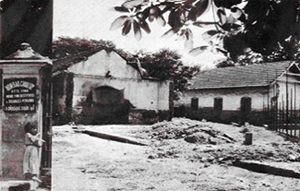
The new institution was designated 'The Madras Infirmary and Native Poor Asylum. At that point, there was also "an Idiots Asylum, a Lazaretto or Leper Hospital, and a Foundling ward for the accommodation of pauper children".
Various additions were made to the Native Infirmary from 1868. Four new wards with 40 beds for female patients were constructed. The Northcote Wards, two model wards, for males and females were furnished. Napier Ward was similarly met from a donation from Governor Napier.
In 1882, the Raja of Vizianagaram defrayed the expenses for bringing water from Red Hills to the hospitals. In the 1880s, the Rajah Sir Ramaswamy Mudaliar Lying-in Hospital was added, named after its donor.
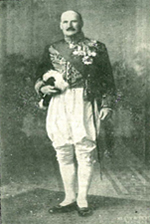
The Auxiliary Royapuram Medical School (1877) trained compounders and sub-assistant surgeons. The predecessor of Stanley Medical College was the Royapuram Medical School that was started in June 1903 as a small school housed in the Old Bullet Factory of the East India Company. In 1913, there were 250 or so pupils in the school, which had minimal facilities (only two low power microscopes for teaching and one with an oil immersion lens kept under lock and key for the use of District Surgeons!).
On December 19, 1913, Governor Pentland laid the foundation stone for the Royapuram Hospital and Medical School.
When the five-year LMP course was inaugurated on March 27, 1934 by the then Governor of Madras Presidency, Sir George Fredrick Stanley, till then known as Royapuram Medical School, was renamed Stanley Medical School in his honour.
On July 2 nd 1938, the Stanley Medical School was upgraded as Stanley Medical College.
Between 1937 and 1939, the new clinics opened included those for venereal, leprosy, dental, ear, nose & throat, and ophthalmic, and separate clinics were organised for Departments of Medicine, Surgery, TB, Dermatology, Electro-Cardiography and Orthopaedics. Bed strength also rose from 462 to 724.
In 1941, three medical and surgical units were created. Permission to start MD and MS courses was given in 1948. By 1950, the College became independent of Madras Medical College. When the new Anatomy and Physiology Departments were inaugurated in the new college building for training students in all subjects of the medical curriculum. The number of students admitted increased from 72 to 100.
"As far as known from published records the first successful heart operation in India was done in Stanley Hospital on November 10, 1948, on a girl of 11 years with persistent patent ductus arteriosus. The girl is known to be doing well and is now married and has children."
By 1952, the Department of Anatomy was upgraded with courses for M.Sc and Ph. D in Anatomy. The institution of a Dean to administer both the College and Hospital was created the same year. The first Dean was Dr. AnanthanarayanaIyer who established the Institute of Anatomy at Stanley in 1955, attracting students from all over the country. He also established the Anatomy Society of India in 1955 as a platform for research and dissemination of information on developments in anatomy at the annual conferences.
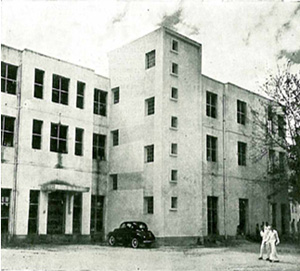
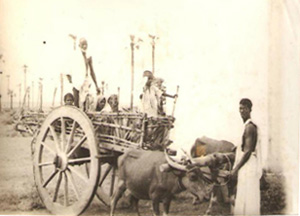
The opening of the Rural Medical Relief Centre at Alamadhi was a pioneering effort that cast a probing light on the problems of providing medical relief in the villages. Rural Medical and Social Service ( RM&SS ) work was started in 1952 by an Alumnus Dr. Nemiraja MD DGO, in Alamadhi Village near Red – Hills in the land donated by Mrs. Kamalammal an Philanthropist from Alamadhi Village and inaugurated by Dr. Ida Scudder, a Medical and Social Philanthropist. Subsequently with the help of Our College Faculties and Alumnus Prof. Dr. S. Kalyanaraman M.S. M Ch. - Neurosurgeon, Alumnus Prof. Dr. Raghuram M.S. and other eminent faculties, regular services on Sundays were provided; in 1955 these services were extended to near by hamlet Grand – Line and Chithranjan near Poonamallee. Holding of a World Medical Students' Conference and the organizing Medical exhibitions to finance the rural medical relief activities are some achievements worth mentioning. These extraordinary achievements of the infant college, which evoked the envy of the sister college, were solely due to the oneness of mind and spirit that prevailed between staff and students. This identity of purpose –this sublime intimacy – came to be referred as the Stanley Spirit.
By January 1963, annual admission rose to 150. There were by then seven medical and surgical units. Bed strength increased to 840 sanctioned beds besides accommodating 100 more extra patients.
The foundation stone for construction of the Silver Jubilee Auditorium for the College was laid by the then President of India , Dr. Sarvepalli Radhakrishnan, on October 30, 1964, as a part of its Silver Jubilee celebrations, the Stanley Alumni contributing Rs. One lakh, then..
On the indomitable 'Stanley Spirit', talk to any Stanlean and everyone will wax eloquent on the SMC Hostel, the College magazine, NCC and other activities that added considerably to the growth and development of "that unique personality – the Stanley Medico. Students imbibed not only scientific knowledge and technical skill but also the Stanley Spirit of cooperative endeavour, where staff and students moved and worked together as members of a family with affection and mutual respect," says an early note. Dr. A. Ananthanarayanan, former Dean and Director of the Central Institute of Anatomy, SMC, and Dr. S. Balasubramaniam, former Dean, endorse these words.
From early note "We never bought textbooks, they were all donated by our seniors who guided us in important exams too. All the top university rankers were from Stanley, which was known for its sports prowess and cultural activities too. Students came mostly from middle class backgrounds or were first gen learners, and so were more close-knit. Our homely hostel canteen was known for its 'Oil Chicken' and attracted students from other colleges too!" The College had a well-equipped gym.
The plastic surgery unit at Stanley officially began in 1971 by the efforts of Alumnus Prof. Dr. R. Venkataswami. In 1973, the Hand Injury Service Centre, the first in the country, was started. In 1980, the Centre introduced microsurgery for hand injuries, the first in the country. In 1987, the Department was upgraded as the Institute for Research and Rehabilitation of Hand and the Department of Plastic Surgery (IRRH & DPS), one of the best centres in South and Southeast Asia. Today the Institute has performed more than 330,000 hand injury surgeries and more than 70,000 plastic surgeries, and is even slated to perform the first hand transplant., the only medical college that could boast of one at the time.
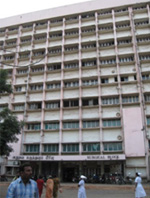
In early 80's Alumnus Prof. Dr. P. Chandra developed the department of Paediatrics into an Institution attaching Social Paediatrics as a main medical service, to cater the real downtrodden North Chennai Public. She was instrumental for a separate Seven Storied Paediatric Block inaugurated in 1982.
A Eight Storied New Surgical Block was constructed in 1984 , under the Dynamic Supervision of Prof. T. Srinivasan HOD of Anaesthesia who, housed all the Surgical Units and allied Surgical Specialities with 20 operation rooms, under one roof.
The Hospital's Department of Surgical Gastroenterology was the first public sector hospital in India to perform a successful liver transplant in 1995, under the leadership of Dr. R.P. Shanmugam. Several successful cadaveric liver transplants were performed since 2000 by an Alumnus Prof. R. Surendran the then HOD of Surgical Gastro Enterology who also was instrumental for ISO 9001 certification (acquired in 2000) of the Department, the First public sector institute to obtain an ISO 9001 Certification and also a creation of Stem Cell research Center in our institution.
This ICMR Stem Cell and Diagnostic Laboratory ensures a zero infection rate that is critical for a transplant programme, and is involved in ongoing research on liver progression cells as a therapeutic option in end-stage liver disease. Currently, the Institute of Surgical Gastroenterology and the Centre for Liver and Pancreatic Diseases at Stanley perform the maximum number of surgeries related to cancer of the pancreas and form to successfully perform liver transplants. Since then, this institute has performed over 35 successful liver transplants. With a Sophisticated medical infrastructure facilities Stanley remains as good as a five-star Hospitals.
The Students' Community with the help of Stanley Alumni Sponsorship started a Green Hands Project in the year 1997, and so far planted around 1,25,000 saplings in and around Chennai city.
Todaywith nearly 1300 beds for in-patient treatment, the hospital now has an out-patient attendance of around 5000 patients a day, a unique 8-storey surgical complex equipped to perform up to 40 surgeries simultaneously, a separate Paediatrics block and an upcoming New Multistory Building with all specialities under one roof, and the RSRM Hospital attached for obstetrics and gynaecology care. Its Department of Urology performs up to fifty kidney transplants a year.
Today, most of the old buildings have been replaced by newer structures in order to cater to the needs of larger patient population. A rare surviving bit of heritage in a forgotten corner is an obelisk with the Aesculapius insignia raised in Maj. E.W.C. Bradfield's time to remember 12 doctors who sacrificed their lives in the Great War. What continues unchanged at Stanley are the old traditions of committed service in an institution that today, as in the past, provides affordable healthcare to the underprivileged!
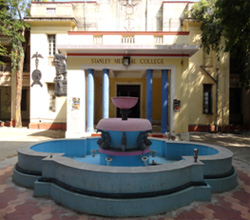
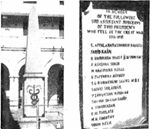
We are proud to say, that Stanley Medical College, is the first Govt. Medical Institution in Tamil Nadu to get a MCI - Sanction for 250 undergraduate Medical Students.